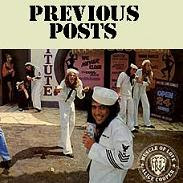WWII-Era Ship Will Be Part Of Artificial Reef
It started as a World War II-era transport and attack ship. It was mothballed twice and retired in 1996 as the oldest ship in the Merchant Marine fleet. On Thursday, the Texas Clipper will plunge to the bottom of the sea and become part of Texas' growing artificial reef system. But it almost never happened. The 473-foot Clipper sank in its berth at the U.S. Maritime Administration facility near Beaumont. It was pulled from the water, patched up and saved. Then the vessel was towed to Brownsville to undergo environmental remediation and preparation to become a reef. "It would make a good movie, the twists and turns in this story," J. Dale Shively, artificial reef program coordinator for the Texas Parks and Wildlife Department, said in a statement. "There were times when we thought for sure the project was dead." The Texas Clipper's new home is 17 nautical miles off South Padre Island. It will become the latest addition to the artificial reef program, resting 134 feet below the surface on a hard sand bottom, according to the Parks and Wildlife Department.
Texas Clipper The ship was launched as the USS Queens on Sept. 12, 1944. It carried troops and wounded soldiers from battlefields in the Pacific, where it was one of the first attack transports to arrive at Iwo Jima. From the end of World War II until 1958, it was commissioned as the SS Excambion as part of American Export Lines, carrying cargo and passengers between New York City and Mediterranean ports. From 1965 to 1994, it sailed as the USTS Texas Clipper, a maritime training vessel for Texas A&M University-Galveston, before finally being retired in 1996. In the mid-1970s, the state sank 12 World War II-era ships to start the program. The program is built around more than 90 petroleum structures at 58 sites. It has received more than $10 million in donations. The reef sites are popular with saltwater anglers and divers. The University of Texas at Brownsville and Texas Parks and Wildlife will monitor biological growth on the ship's hull. Texas A&M University and the National Marine Fisheries Service will conduct an ongoing experiment to look at the pace of corrosion in Gulf waters. The study will help gauge the potential environmental impact of wrecks of oil tankers or other ships containing hazardous substances.





















<< Home